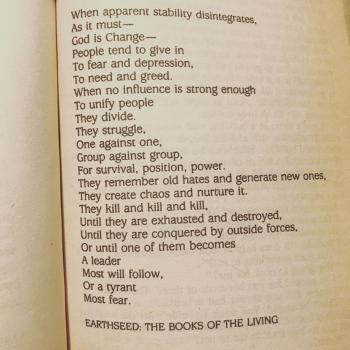David Kyle Johnson writes in the Sci Phy Journal:
Ironically, The Black Hole may have been more accurate than Interstellar regarding one aspect of black holes: what you would see if you entered one.
Now, this may seem odd if you’ve seen both films. In Interstellar, Cooper enters Gargantua to find a tesseract—a 3 dimensional representation of a four dimensional object (in this case, his daughter bedroom) placed there by “five-dimensional bulk beings.” The idea that all black holes contain tesseracts is not suggested by the movie (and certainly is not entailed by relativity); but if such beings did exist, you could at least imagine them placing one inside.
In The Black Hole, however, what Reinhardt and the crew of the Palamino see is the clouds of heaven and the fires of hell—and that’s ridiculous! Indeed, while Thorne said that Nolan could use his imagination to decide what Cooper would see in Gargantua (since we really don’t know what it would be like), he asked specifically for him to avoid depicting “Satan and the fires of Hades” like The Black Hole did.
The reason I’m suggesting that The Black Hole is more accurate than Interstellar in this regard, however, is because the afterlife is what you would most likely see if you entered a black hole. Why? Because, despite the theories of crazy ol’ Dr. Reinhardt in The Black Hole, there is no way in hell (pardon the pun) you would survive. The gravitational forces of a black hole increase exponentially as you approach it—so much so that, if you were to approach it feet first, the gravitational pull on your feet would eventually be hundreds (even thousands) of times greater than on your head. This would result in something scientists actually call “spaghettification” because it would turn you into something that looks like one long string of spaghetti. You would essentially be stretched to death.
Now, of course I realize that an afterlife is just as non-scientific as five-dimensional bulk-beings and a tesseract; in other words, although they aren’t necessarily contrary to science, belief in either would require faith. Fair enough. But hopefully my point is clear: Surviving a trip into a black hole, like Cooper does in Interstellar, isn’t scientifically sound. Thorne himself even finds it dubious.7 But at least when you watch the end of The Black Hole, you can interpret the film in a way that aligns with the scientific facts about black holes: “They all fell into the black hole? Oh yeah…they’re all dead.”
You should read the rest of his comparison between Disney’s The Black Hole and Interstellar. Patrick Woods‘ is also worth your time. Both compare the accuracy of the physics in relation to what experts currently say. Do take a look as well at my post from back in 2016 about the classic Disney film, whose religious ending I was immediately intrigued by even at the time, although having gone into the field of religious studies, I’m far more interested in it now than I was then!
See also the recent NASA blog post debunking widespread misconceptions about black holes. See too:













